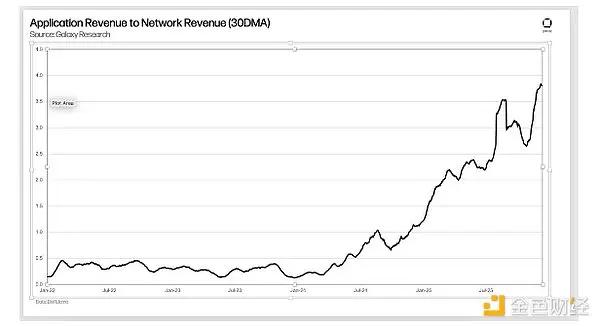
Author: YBB Capital Researcher Zeke
Preface
For President Trump, the world is a huge "Apprentice" reality show. In less than a month of taking office, from internal agency staff to foreign leaders, many have already received "You're fired" dismissal letters from Trump. In the remaining four years of the program, how can Crypto, as a key guest, successfully advance? I think we might have to start by understanding this boss.
I. The market likes surprises, but I must control the pace
In Trump's autobiography "The Art of the Deal", "controlling the pace" and "creating surprises" are the core pillars of his negotiation philosophy. The intertwined use of these two strategies not only built his early business empire, but also set the tone for his later political battles.
"Controlling the pace": The original sentence in the book: "In a deal, you have to set the pace. If you let the other side dictate the timing, you've already lost half the battle."
"Creating surprises": The original sentence in the book: "The element of surprise is crucial. When they think you've given in, hit them with a new demand—it throws them off balance."

Looking back at Trump's classic negotiation cases during his early business days, starting from the New York Hyatt Hotel project in 1976, Trump has shown absolute control over the pace of negotiations. When the city government demanded that he bear the cost of renovating the subway station, he used the threat of withdrawing from the negotiations to create a sense of urgency - he suddenly announced a work stoppage just three days before the city's budget deadline, forcing the New York City Council to urgently pass a tax relief plan, ultimately increasing the government subsidy from $40 million to $120 million. In the 1983 Trump Tower project, he even took the delaying tactic to the extreme: when the project was 90% complete, he suddenly sued the contractor for construction delays, using the other party's eagerness to settle the final payment to successfully compress the project payment by 23%.
The 1985 Atlantic City casino acquisition case was the pinnacle of his "surprise strategy". After eight months of negotiations, when the seller, the Pratt Hotel Group, had already prepared for the signing ceremony, Trump threw out a new demand to take on $300 million in debt in the last 48 hours. This seemingly crazy move was actually precisely calculated: he knew the other party had already invested $2 million in legal fees, and the bankruptcy of the project would lead to collective debt collection by the banks. In the end, the seller was forced to accept the terms, and Trump completed the acquisition at 40% below the market price. This "sunk cost extortion" later became his signature negotiation style, as described in "The Art of the Deal": "The best time to strike a fatal blow is when the other side thinks they have the upper hand." This highly coercive negotiation strategy is both the "rules of the deal" he advocates and the "destructive survival tactics" he is so controversial about.
Let's bring the timeline back to the present day. On February 28, Zelensky and Trump held a globally broadcast US-Ukraine bilateral meeting at the White House, and Trump used his usual tactics in this meeting. First, on the eve of the meeting, he reached a lightning-fast four-point consensus with Russia, the most critical of which was that the two sides agreed to lay the foundation for future cooperation on common geopolitical interests and economic and investment opportunities, which would emerge as the Russia-Ukraine conflict ended. The second was to issue a sky-high order demanding $500 billion in repayment, and in the meeting this demand was changed to Ukraine channeling 50% of the future earnings from strategic resources such as rare earths, lithium, and graphite into a "reconstruction fund" led by the US. The live broadcast of the entire meeting left the world audience stunned, and in the end Trump even demanded that Zelensky leave directly, leading to the breakdown of the negotiations. And the tariff stick he waved outward also encountered retaliation. President Trump obviously did not have a happy weekend.
From the above cases, we can get a more specific summary of Trump's deal rules: 1. Propose goals far exceeding expectations, forcing the other party to accept suboptimal conditions; 2. Utilize all means to put pressure on the other party to maximize benefits; 3. Be unpredictable, making it impossible for the other party to figure out; 4. Habitually use the power of the media to infinitely amplify events.
And from the counterattacks of multiple countries, the way to counter this strategy seems quite simple: refuse to deal, refuse to negotiate.
II. Strategic Reserves

After the US-Ukraine bilateral meeting ended last Sunday, Trump posted two tweets on his social media platform Truth Social, saying that XRP, SOL and ADA will be included in the "crypto strategic reserves", with ETH and BTC still being the core. After the news was released, the market saw a bull run, according to CoinMarketCap data, with Bitcoin once rising 9% to $93,969, Ethereum rising 13% to $2,516, Solana soaring 24% to $174.64, Cardano surging 70% to $1.11, and XRP rising 34% to $2.93. However, the reaction in the crypto community to these two "fire-fighting" tweets was very different from the previous supportive attitude, and the key trigger was a user on Hyperliquid who allegedly used a front-running strategy to long BTC & ETH with hundreds of millions of dollars at 50x leverage, and the analysis on social media suggests that the user chose to trade on a DEX to avoid getting their KYC information from a centralized exchange. There are also many conspiracy theories, such as the Sunday release being to pump the price for institutional sell-off on the working day, and using multiple channels to cash out, treating the crypto world as an ATM, etc.
Trump's surprise announcement of a basket of crypto currency reserves is still in line with his usual style, but the real purpose is hard to fathom, and given his current appetite, these speculations may still be far from enough. Combining the "deal rules" mentioned earlier, I personally speculate on some possible purposes:
1. Although he mentioned many crypto currency reserves, the actual purpose may be to get the US to accept a suboptimal situation, i.e. at least ensure that the BTC strategic reserve becomes a reality. This would attract more mainstream countries to buy BTC, with the US still maintaining dominance;
2. In addition to greater influence, Trump also has the power to constantly hype the "strategic reserve" expectation after being elected president, just like the past ETF expectation, in order to continuously control the market trend;
3. Trump needs to constantly strive for influence and power for this family that has shifted from real estate to crypto, and he is trying to enter crypto from every possible angle;
4. There is obviously a more complex network of interests behind the "White House selection";
5. Currently, there is a clear lack of funding sources to buy the crypto strategic reserves, and Trump is using his usual media support to force the seized crypto to be converted into strategic reserves, or to demand the issuance of related bonds;
6. The basic concept of strategic reserves is the planned storage of materials, energy, financial resources, etc. by a country in peacetime. The biggest question about crypto currencies becoming strategic reserves is that they have no inherent use, even if BTC can be compared to gold. The introduction of the strategic reserves of other altcoins still lacks support, and Trump may already have plans to promote the large-scale adoption of several public chains in various fields, and the public chain tokens as the "oil" to access the chain can naturally also be regarded as "material reserves".
III. Destructive Survival

Trump's decision-making style and personality traits were deeply influenced by his father Fred Trump. His father, through high-pressure education, defined interpersonal relationships as a "zero-sum game", and this growth environment shaped Trump's competitive mentality of "demonizing" his opponents. Whether it is the cases of confrontation in his business and diplomatic fields, or the incident of inciting his supporters to storm the Capitol after the 2020 election defeat, they clearly highlight his core survival law of attack, destruction and suppression.
Retail investors in the crypto world often shout "long live the crypto president", but we need to be cautious that we may not be on the same side as the crypto president, as the concepts of "America First" and "family first" will still be implemented in his crypto world. Although it is not yet clear how Trump will retaliate against non-American and non-family projects, it is clear that he is using a tariff war-like approach to ensure the "America First" and "family first" in the on-chain world.
1. Priority for American projects through ETFs and strategic reserves;
2. American projects may enjoy zero capital gains tax in the future, while projects he dislikes may be taxed;
3. "Privileges" for family projects, such as regulatory sandboxes and targeted capital injections.
The above three points are the current obvious trends, and in my opinion, Trump may also have ways to suppress the output of non-American mining pools, so that every remaining BTC is as "Made in USA" as possible. Projects that meet US standards will thrive on-chain, with regulatory interfaces integrated at the protocol layer. And there is much more to be unfolded in the next four years, the Americanization of crypto has already entered an irreversible stage. As participants in this grand plan, we either choose to ally or choose "refusal to trade".
IV. The Shadow of DOGE
Trump's friend Elon Musk once pushed the originally satirical Dogecoin to a market capitalization and physical "moon" during the 2021 crypto bull market. This joke coin, which originated from an internet meme, was initially developed by engineers Billy Markus and Jackson Palmer in 2013 to mock the crazy speculation in the crypto market at the time. Its code was completed in just 3 hours, using an unlimited issuance mechanism, and even referred to mining as "digging holes", completely overturning the scarcity narrative of Bitcoin.
However, Musk has breathed new life into this ancient MEME through social media. He has been calling himself the "Dogfather" since 2019, igniting market enthusiasm with slogans like "to the moon" and "the people's currency", and even named SpaceX's 2025 lunar satellite launch mission DOGE-1, making it the first space project fully paid for by Dogecoin. This frenzy has driven Dogecoin to surge over 7000% in 2021, with its market capitalization once exceeding $85 billion, surpassing traditional giants like General Motors, completing a reversal from a satirical tool to a top 10 global crypto asset.
The greatest tragedy in the world is to become the person you hate the most. The crypto world is re-enacting the fate trajectory of its object of resistance. Bitcoin, once the "anti-centralization blade", has now become the new carrier of American hegemony - capital flows are following the swing of Trump's tweets, from BTC to Trump, Melania and so-called altcoin strategic reserves, wherever the baton points is the future of crypto, and the vitality of crypto has been lost. When the rebels become part of the establishment, crypto can never escape the narrative closed loop of "the dragon-slaying youth eventually becoming the dragon".
V. Double-edged Sword
Putting aside self-interest, Trump is indeed a legend in the history of American politics and business, and I also believe that BTC will accompany him to the moon. But what innovation can crypto have under the interference of power and high regulation? In the past I was angry at altcoins, but now I also feel sorry for them. The battle for attention and power is permeating the chain, just as Vitalik replied on X to the Ethereum OGs:
When I hear crypto Twitter and VC people proclaim that "user loss rate over 99% PvP, KOL gambler casinos are the products most suited to the crypto domain and market", and call "longing for something better as elitist", do I feel pleased?
And this situation may become even more intense in the future, PvP is just a microcosm, and in the next four years, the so-called best projects may only appear in Trump's tweets. The crypto that Trump advocates has always been a double-edged sword, and crypto may eventually split into multiple layers such as traditional and American-style, and the past public chain war will also be carried out on a larger scale. Under Trump's strong strategy and huge influence, this war may be fought very fiercely, but the rebirth of crypto will inevitably go through this ordeal.







